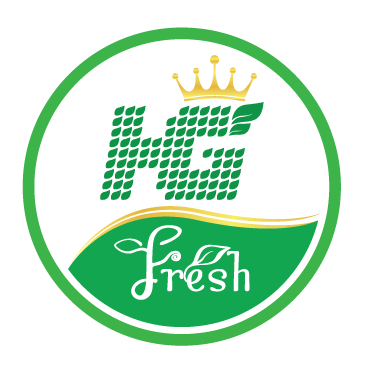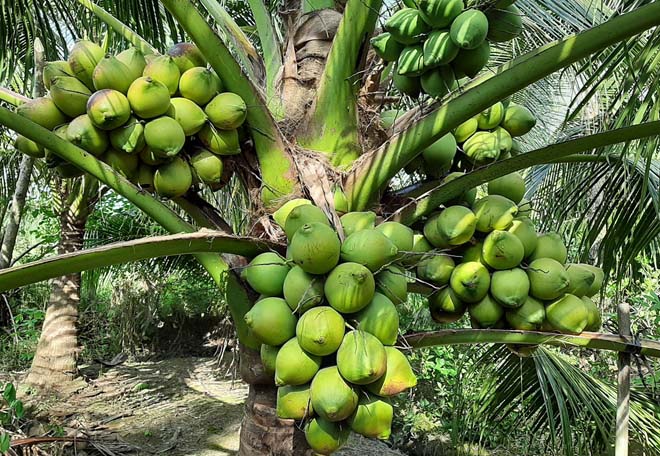Among 93 coconut growing countries in the world, Vietnam's coconut area ranks 7th. Vietnam's coconut has the highest quality and productivity in the world (according to the International Coconut Community (ICC) assessment). If you are interested and learn about Vietnamese coconuts, please follow the article below!
Area of coconut trees in Vietnam
Among 93 coconut growing countries in the world, Vietnam's coconut area is ranked 7th.
As for in Vietnam, in the perennial industrial plants with a large area, coconut is ranked fourth, after rubber, cashew, and pepper.
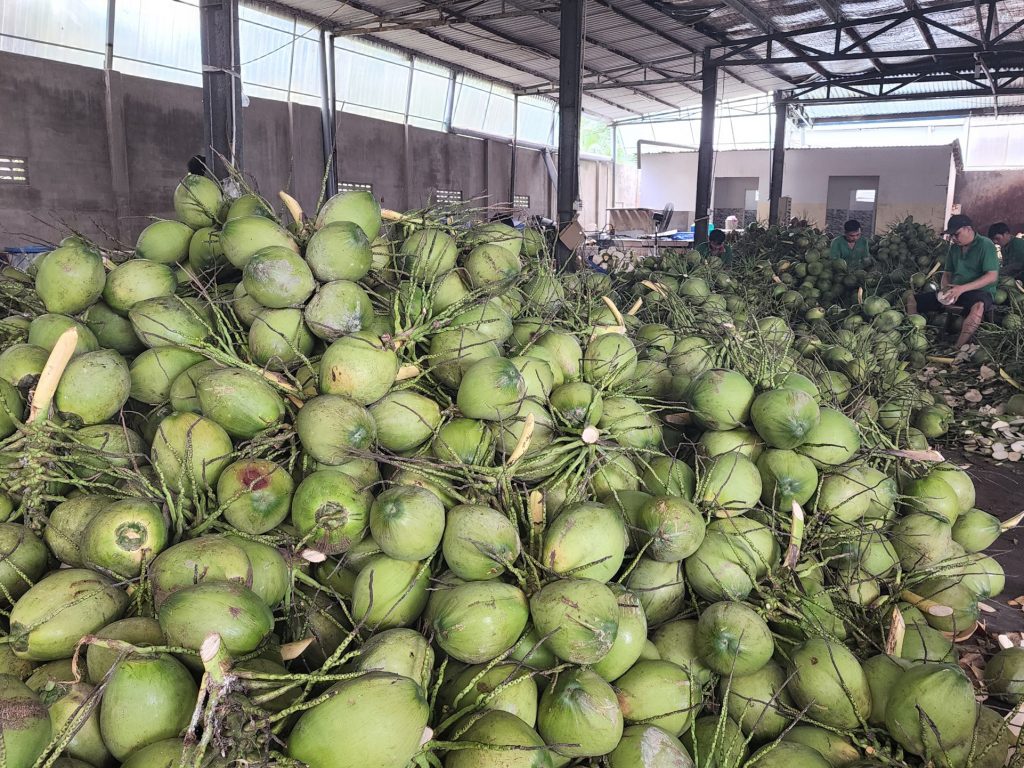
Currently, about 175,000 hectares of coconut area in the country, concentrated in the Central Coast provinces and the Mekong Delta.
In which, the Mekong Delta with an area of about 130,000 hectares accounts for nearly 80% of the country's coconut area.
The provinces with large coconut growing areas are: Ben Tre with over 72,000 hectares, Tra Vinh with nearly 20,000 hectares, Tien Giang with over 14,000 hectares, Vinh Long with over 7,000 hectares, and Ben Tre with nearly 200,000 households growing coconuts.
And also from here, coconut is identified as an important crop providing raw materials for many industries.
Vietnamese coconut has the highest quality and productivity in the world
According to information from the Department of Industry and Trade, the production value of the coconut processing industry in the first 6 months of 2022 is estimated at VND 1,800 billion, up 4.05% over the same period, equivalent to an increase of VND 70 billion, accounting for 10.32% of the price. industrial production value of the whole province.
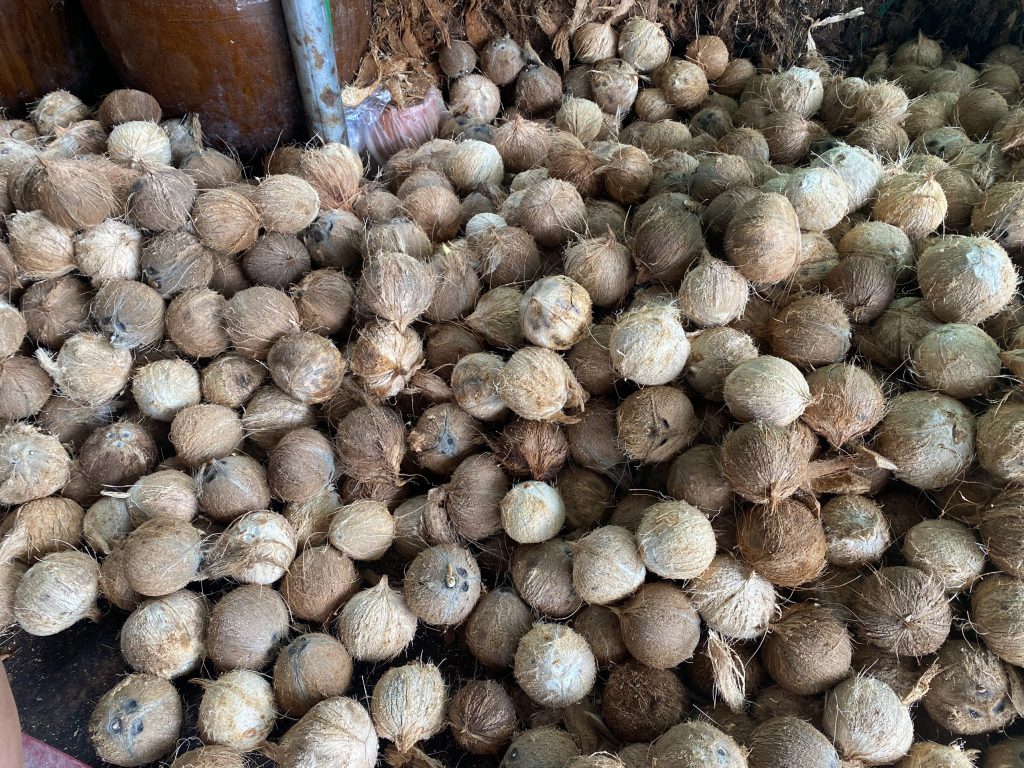
Export turnover of the province reached 253 million USD, up 7.17% over the same period. Specifically, desiccated coconut 11,023 tons, up 8.94% over the same period last year; coconut milk 32,767 million liters, up 1.72%; fresh coconut water 19,168 million liters, an increase of 22.86%, fresh coconut about 2.7 million fruits, equivalent to 1.9 million USD, ...
Coconut products have been present on the market of more than 90 countries and territories.
Currently, in the province, there are more than 90 enterprises participating in exporting coconut and coconut products. Some leading enterprises in Ben Tre: Luong Quoi Coconut Processing Company Limited, Ben Tre Coconut Investment Joint Stock Company, Ben Tre Import-Export Joint Stock Company ... have FDA, Halal, Kosher, BSCI certifications, BRC, Organic.
Vietnamese coconut is increasingly asserting and improving the value chain
According to Deputy Director of the Department of Cultivation (Ministry of Agriculture and Rural Development) Le Thanh Tung: Coconut is one of the crops that have been planned by the Government and the Ministry of Agriculture and Rural Development.
In Decision No. 124/QD-TTg dated 2/2/2012, the master plan for agricultural production development to 2020, vision to 2030, Vietnam coconut area is 140,000 ha. The main production areas are the Mekong Delta, the South Central Coast, the Central Highlands, and the Southeast.
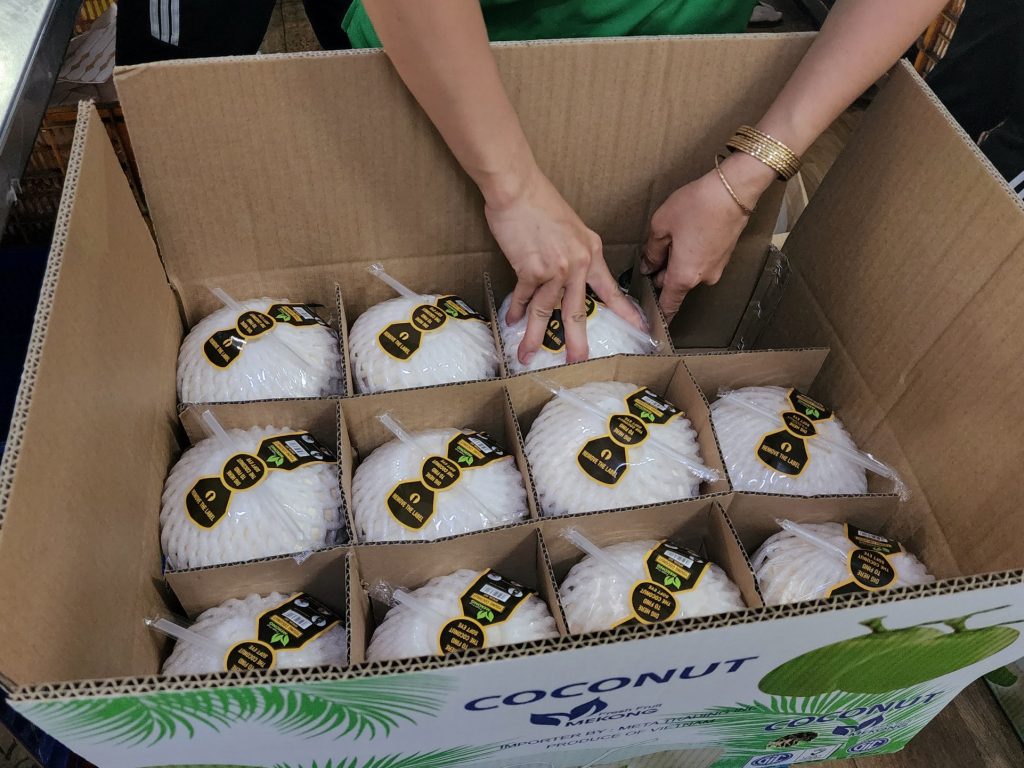
On April 2, 2014, the Ministry of Agriculture and Rural Development also issued Decision 639 on agricultural and rural planning in the Mekong Delta until 2020 with a vision to 2030.
In which, the output reached 1 million tons and the coconut area was 123.3 thousand hectares. The agricultural sector will focus on renovating the old coconut garden, replacing the trees with more productive varieties. Simultaneously, replicating models and applying appropriate intensive farming models intercropping cocoa, raising chickens, aquaculture, etc.
After the direction of Mr. Truong Hoa Binh - Permanent Deputy Prime Minister of the Government on sustainable development and income enhancement for coconut growers, the People's Committee of Ben Tre province has set out a group of 6 tasks for departments, departments and branches of the province. implemented by the province. In particular, through the development of cooperatives, THT to develop the coconut value chain. This is the basis for businesses to invest in building material areas, linking consumption, improving value chains and developing exports.
We hope that this article provides all the necessary information for your reference. For any questions, please contact hotline 1900 252517 for support!
